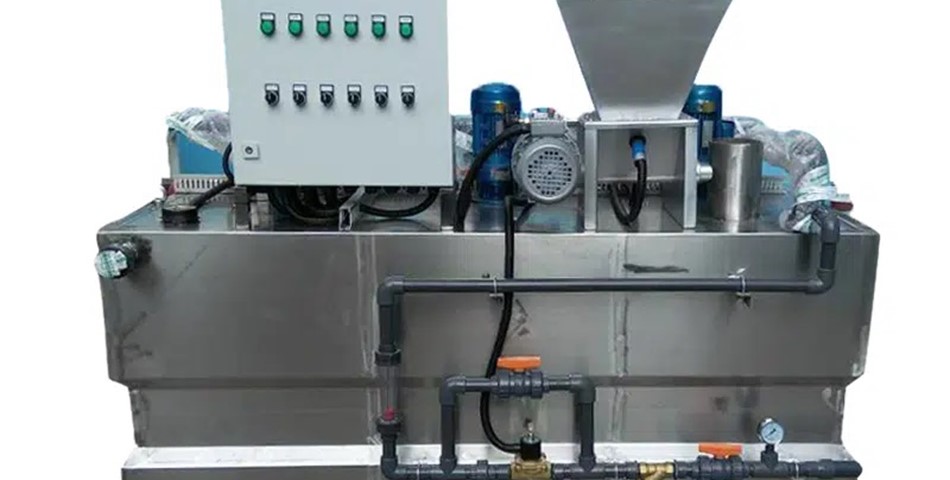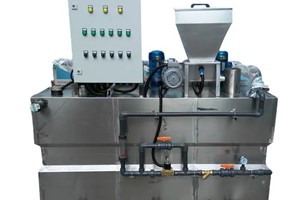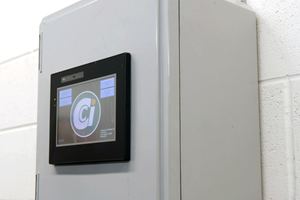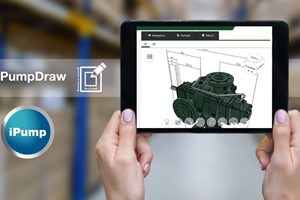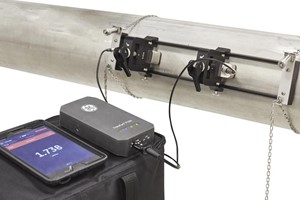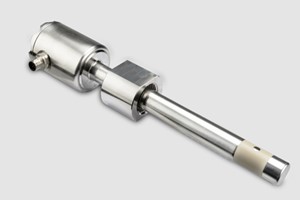Chemical dosing system is a complete set of equipment with dosing, mixing, transporting liquid and automatic control. It is also called chemical feed system or dosing machine.
It is used for raw water of power plant, boiler feed water, oil field ground gathering and transportation dehydration treatment system, petrochemical dosing system and wastewater treatment system.
Our chemical feed systems are pre-engineered solutions that can be used effectively in many different industries and municipal water treatment processes. These are high performance sodium hypochlorite dosing systems – for example when used to disinfect drinking water or as part of a chemical scrubber system. Compact and lightweight pre-packaged skids, corrosion resistance, flexibility of metering pump options and ease of maintenance are some of the advantages of our advanced chemical feed systems. Water treatment applications include disinfection (peroxyacetic acid – PAA injection), fluoride treatment, sodium bisulfite dosing, sulfuric acid dosing, sodium hypochlorite systems, dispersant polymer dosing, sodium hydroxide feeding, potassium permanganate dosing, coagulation and flocculation, hydrochloric acid dosing, alum feeding, pH neutralization and scale inhibitor addition.
How does the chemical dosing system work?
In the first step, operators of industrial wastewater treatment systems identify the chemicals dissolved in the water and create a report based on their findings. This report helps the wastewater treatment plant operator determine the correct chemicals to dose to make the water drinkable again. These operators must be constantly aware of what is happening in the treatment plant and adjust dosing levels and rates accordingly. For example, if there is a high level of phosphate in the wastewater, more iron is added to counteract the effects of phosphate. Overall, they know the levels of chemicals present in the wastewater and chemically meter accordingly.
Since this manual check is not always feasible, many companies have developed an automated system that automatically checks the chemical levels in the inlet stream, analyzes the content, sends this data in real time to the chemical metering system, and then automatically adjusts the speed and volume of the metering pumps located at the chemical feed station. The entire process is monitored by an operator to increase efficiency.
How to do chemical dosing?
In many water treatment scenarios, such as water plants, power plants, chemical plants, petrochemicals, etc., chemical dosing pumps are commonly used for the direct dosing of chemicals. The dosing pump can measure the conveyed liquid (especially corrosive liquid), can meet certain accuracy requirements, and the flow rate can be stepless adjusted in the range of 0-100%. The functions of conveying, metering and regulating are completed simultaneously, thus simplifying the production process.
What does the chemical dosing system look like?
Chemical dosing system will depend on many things, such as location, space availability, nature of the chemical, plant size, etc. Typically, there will be at least two chemical storage tanks used to store chemicals for maintenance purposes. The water from the inlet stream flows through a number of filters in the chemical feed system. Each filter reduces the debris in the chemical and the water flows to the metering point. This is where the chemicals in the tank are released into the water to treat and remove dissolved chemicals from the water. Depending on the level and amount of dissolved chemicals in the wastewater, these chemicals are released at a certain rate and pressure.
Finally, the water is measured through a calibration point and if it meets existing standards, the drinking water is sent for a final chemical purification and is then ready for use. If it contains any additional chemicals, the water is sent back again for chemical metering.
These chemical dosing systems are very efficient, which is what makes them an integral part of any wastewater treatment plant.
Difference between different chemical dosing systems
Different chemical dosing systems use different reagents. Each of these reagents works in a different way. The common denominator is that they all condition the effluent to prevent the biological or chemical formation of odorous emissions.
Which reagent and system to use depends on your water treatment network.
Our chemical feed systems are available in all types of configurations with the widest range of pump options, piping arrangements and materials. In addition, our technical expertise in engineered system design integrated with turnkey modules for environmental enclosures, and IoT transfer modules can help you develop fully transportable, easy-to-install, easy-to-control, all-in-one solutions for your chemical metering applications.
Acid Alkali pH Chlorine Dosing System
The system combines PE tank, metering pump, mixer and automatic control system into one. The metering pump and mixer are set on the PE tank, and the outlet of the metering pump is connected to the dosing pipe and inlet pipe. This metering pump is controlled by the automatic control system, which automatically controls and checks the dosing speed and dosing quantity. When adding chemicals to the wastewater treatment plant, the mixer mixes the chemicals with water and the metering pump sends the chemicals into the wastewater inlet pipe under the control of the automatic control system. The mixed chemical wastewater flows into the subsequent units.
PAM PAC Powder Dosing System
The system is a kind of equipment which can automatically and continuously add chemical dry powder and dissolve chemical liquid.
You can easily and reliably adjust water for your intended use and to meet technical requirements. Application areas include the following doses:
- Acids are used to reduce alkalinity and prevent scaling
- Polyelectrolytes are used for the condensation of suspended solids and for improved subsequent filtration
- Scale inhibitor can avoid scaling on reverse osmosis film
- Disinfectants for impact treatment to avoid bacterial growth
- Chlorine prevents biological growth and storage tanks in pipes
- Hydrated lime or caustic soda is used to regulate pH to neutralize dissolved free carbon dioxide.
Did you know that only 3% of the water on earth is fresh? As the population grows, it is more important than ever to save water and reuse existing water through sewage treatment plants. Depending on the source of the sewage, many chemicals (such as phosphates) are mixed into it, which makes the water not directly usable for drinking and cleaning. At this point, the water treatment equipment should use chemical dosing to remove these chemicals.



